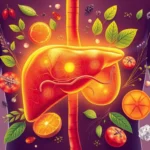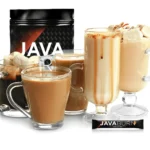Categories:
Some types of belly fat seem impossible to lose, no matter how many crunches you do. Excess skin and fat hanging from your tummy is called pannus stomach. This condition affects millions after pregnancy, weight changes, or aging.
The drooping skin and tissue around your abdomen create a “mother’s apron.” This isn’t regular belly fat. It’s a specific condition where excess tissue hangs down, sometimes covering the pubic area.

I understand the discomfort and emotional challenges this condition brings. Over the years, I’ve developed strategies to address aesthetic concerns and health risks. These methods target both physical and emotional aspects of excess abdominal tissue.
This guide covers everything about pannus stomach. You’ll learn its causes and how it differs from regular tummy fat. Proven methods to reduce this stubborn tissue include nutrition, exercise, lifestyle changes, and medical interventions.
🤯 Mind-Blowing Results: How This Supplement Changed Everything for Weight Loss.
Table of Contents
Key Takeaways
- Pannus stomach occurs when excess skin and fat hang down from the abdomen like an apron
- This condition commonly develops after pregnancy, weight fluctuations, or aging
- It differs from regular abdominal fat and often requires specialized approaches
- Both lifestyle modifications and medical interventions can help address this condition
- Targeted exercise and nutrition play crucial roles in reducing excess abdominal tissue
- Managing this condition can improve both physical comfort and emotional wellbeing
Understanding Apron Belly: Definition and Characteristics
An apron belly is a hanging layer of skin and fat on the lower abdomen. It’s also called a pannus. This condition affects many people and can impact physical comfort and self-esteem.
Understanding apron belly is the first step to addressing it effectively. It’s different from regular belly fat and requires specific approaches for management.
Medical Definition and Terminology
Doctors call an apron belly a panniculus or pannus. It’s the overhang of skin and fat tissue from the lower abdomen. Medical professionals grade pannus severity from 1 to 5.
A pannus forms when excess skin and fat deposits build up in the belly area. Unlike bloating, it’s a lasting change in how tissue sits on your midsection.
How Apron Belly Differs from Regular Abdominal Fat
An apron belly is unique compared to typical belly fat. It hangs like an apron from your abdomen, instead of just sticking out.
Regular belly fat spreads evenly across the midsection and feels firmer. The pannus creates a hanging pouch that can move when you do.
This difference matters because treating each condition requires different methods.
| Characteristic | Apron Belly (Pannus) | Regular Abdominal Fat |
|---|---|---|
| Appearance | Hangs down like an apron | Protrudes outward |
| Mobility | Can be lifted or shifted | Relatively fixed in position |
| Texture | Often softer, may include loose skin | Usually firmer, more uniform |
| Response to exercise | May require skin tightening approaches | Often responds to traditional fat loss |
Recognizing Apron Belly in Your Body
Knowing if you have an apron belly helps choose the right treatment. Look for skin hanging from your lower abdomen that you can lift with your hands.
This overhang is more visible when standing. It might create a fold where the skin meets the pubic area.
Apron bellies vary in size. Some are barely noticeable, while others can reach the thighs or knees.
The area under the fold is often warm and moist. This can lead to skin irritation. It’s a key sign that sets apron belly apart from other belly fat types.
😴 Lose Weight While You Sleep? This Supplement Makes It Possible (Really!)
Root Causes of Apron Belly Fat
Apron belly fat results from various factors working together. These include physiological and lifestyle elements. Four main contributors explain why some people develop this hanging abdominal fat layer.
Understanding these causes is crucial. It’s the first step to effectively addressing apron belly. Let’s explore these factors in detail.
Weight Fluctuations and Obesity
Significant weight changes greatly impact apron belly fat development. Rapid weight gain causes fat cells to expand, stretching skin and tissue. This is especially true in the abdomen.
Problems often worsen after substantial weight loss following obesity. Skin that stretched for larger fat deposits may not shrink back. This leaves a hanging apron of loose tissue and skin.
Repeated weight gain and loss can further damage skin elasticity. This makes the apron belly more noticeable over time. Gradual, sustainable weight management is more effective in preventing this condition.
Pregnancy and Postpartum Changes
During pregnancy, the abdominal wall stretches to accommodate the growing baby. This affects skin, muscles, and connective tissues. “Mother’s apron” is common after childbirth.
Diastasis recti, a separation of abdominal muscles, is a key factor. It provides less support to the abdominal wall, allowing the lower belly to protrude more.
Multiple pregnancies intensify these effects. The abdominal tissues stretch further with less recovery time. This creates ideal conditions for apron belly development.
Aging and Hormonal Influences
Aging causes hormonal shifts that affect fat storage. For women, menopause triggers fat redistribution toward the abdomen. This happens even without weight gain elsewhere.
Aging also reduces skin elasticity and collagen production. Increased abdominal fat storage combined with decreased skin firmness creates ideal apron belly conditions.
Hormonal imbalances like high cortisol from stress worsen abdominal fat storage. This makes the lower belly area vulnerable to developing a hanging appearance.
Genetic Predisposition Factors
Genetics influence where we store fat and how our skin responds to stretching. Some people are predisposed to storing fat in their abdomen due to their genes.
Inherited skin elasticity plays a major role. Those with more elastic skin may experience less severe apron belly after weight changes or pregnancy.
Family patterns of fat distribution often provide clues about personal risk factors. The National Institutes of Health states genetics can account for 70% of body fat distribution patterns.
🧑⚕️ 3 Weight Loss Supplements Even Skeptical Experts Are Talking About Now.
Health Risks Associated with Apron Belly
Apron belly can lead to serious health issues beyond just appearance. This condition impacts quality of life significantly. Understanding these health risks and complications is crucial for those affected.
Physical Health Complications
An apron belly is more than excess skin and fat. It’s active tissue that affects your whole body. This condition can cause serious systemic health problems.
Fat cells in an apron belly produce hormones and inflammatory substances. These circulate in your bloodstream, increasing the risk of type 2 diabetes. They can also contribute to insulin resistance.
Excess abdominal fat strains your heart. This raises the chances of high blood pressure and cardiovascular disease. It can also lead to elevated cholesterol levels.
The physical burden of an apron belly causes other health issues. It can alter your center of gravity, leading to chronic back pain. Joint problems and mobility limitations are also common.
Research links excess abdominal fat to certain cancers. These include colorectal, pancreatic, and breast cancer. The inflammatory state affects various parts of the body.
Skin Problems and Daily Discomfort

The overlapping skin folds of an apron belly create problems. They cause chafing and friction when skin surfaces rub together. This leads to intertrigo, a painful inflammatory condition.
Intertrigo creates an ideal environment for infections. Yeast, fungal, and bacterial organisms thrive in the warm, moist areas. These can cause intense itching, burning, and unpleasant odors.
Keeping affected areas clean and dry is crucial to help prevent skin issues. However, this can be challenging with an apron belly. Persistent moisture can lead to skin breakdown and painful sores.
Daily activities become challenging with an apron belly. Finding comfortable clothing, exercising, and sleeping can be difficult.
🌿 The Ancient Herb in This Supplement That Burns Fat Like Modern Science.
Setting Realistic Goals for Your Apron Belly Journey
Tackling apron belly fat requires understanding realistic timelines and progress metrics. Sustainable change happens gradually, not through quick fixes. Clients who set reasonable expectations are more likely to achieve lasting results.

Understanding Timeframes for Fat Loss
Reducing apron belly fat is a marathon, not a sprint. Healthy fat loss typically occurs at 1-2 pounds per week. This slow and steady approach allows your skin to adapt as you shed extra weight.
Spot reduction is scientifically impossible. Your body decides where to burn calories and reduce fat based on genetics and hormones. The American Council on Exercise explains this concept clearly.
“Fat cells shrink systematically throughout the body, not in specific areas where exercise occurs.”
Significant changes in your apron belly may take 3-6 months of consistent effort. Some loose skin may remain even after reaching a healthy weight.
Measuring Progress Beyond the Scale
The scale tells only part of your story. Track multiple indicators to stay motivated while working on your apron belly. Take monthly waist and hip measurements using a soft measuring tape.
Notice how your clothes fit. Many people report looser pants around the waist before seeing mirror changes. This shows progress in improving the appearance of your midsection.
Monitor your energy levels and physical capabilities. Can you climb stairs more easily? Are you playing longer with your kids? These improvements show you’re taking effective steps to help reduce your apron belly.
Celebrate non-scale victories. Each positive change proves your efforts are working to reduce or remove your apron belly. Remember, every small improvement matters in your journey.
⚡️ Supercharge Your Metabolism Instantly: The Supplement Key You’ve Been Missing.
My Proven Nutrition Strategy for Reducing Apron Belly
I’ve developed a nutrition strategy to tackle apron belly fat. It combines scientific evidence with practical applications. This approach has helped many clients transform their bodies and lives.
Creating a Sustainable Caloric Deficit
A caloric deficit is key to any fat loss plan. It means eating fewer calories than your body burns. Sustainable deficits work better than crash diets, which often lead to rebound weight gain.
Calculating Your Personal Calorie Needs
Start with your basal metabolic rate (BMR). For women, multiply weight in pounds by 10. For men, multiply by 11. Adjust based on activity level: sedentary (1.2), moderately active (1.5), or very active (1.7).
This gives you a starting point. Create a modest 300-500 calorie daily deficit from there.
Meal Timing and Frequency
Eating 3-4 properly portioned meals works better than constant grazing. This approach helps regulate insulin levels, which impacts fat storage. Consider having your largest meal earlier in the day.

Optimal Foods for Belly Fat Reduction
Not all calories are equal when it comes to belly fat. Some foods target abdominal fat, while others promote it.
Anti-Inflammatory Food Choices
Inflammation drives fat storage, especially around your midsection. Focus on foods rich in omega-3 fatty acids like salmon, walnuts, and flaxseeds. Add colorful vegetables and fruits that contain polyphenols.
Berries, leafy greens, and citrus fruits are excellent choices. Include spices like turmeric and ginger, which have powerful anti-inflammatory properties.
Foods to Limit or Avoid
Refined carbs spike insulin and promote fat storage in your apron belly area. Limit white bread, pasta, sugary drinks, and processed snacks. Trans fats are harmful, adding weight and shifting fat storage to your abdomen.
Alcohol is another major culprit. It’s high in empty calories and disrupts fat-burning processes.
Hydration Strategies for Fat Loss
Water is your secret weapon for fighting apron belly. It supports metabolism and helps process fat. Drink half your body weight (in pounds) in ounces of water daily.
Start each morning with 16 ounces of water before anything else. This jumpstarts metabolism and flushes toxins. Add fresh lemon for flavor and its mild diuretic effect.
Replace sugary drinks with water, unsweetened tea, or black coffee. This switch can lead to significant fat reduction over time. Try drinking cold water before meals for a small metabolic boost.
Weight loss can cause temporary plateaus. A slow, steady approach combining proper hydration with these nutrition strategies yields lasting results. This plan follows strict sourcing guidelines and relies on peer-reviewed studies.
❓ Could This One Supplement Be the Missing Piece in Your Weight Loss Puzzle?
Effective Exercise Routines I Recommend for Apron Belly
The right exercise routine can transform your apron belly. I’ve developed workout strategies that target excess abdominal fat and strengthen core muscles. A well-designed fitness program can speed up fat loss and tighten your abs.
Cardio Workouts to Maximize Fat Burning
Cardio exercise is key to creating a calorie deficit for fat burning. Combining different cardio approaches yields the best results for reducing apron belly.
HIIT Training Protocols
High-Intensity Interval Training (HIIT) efficiently burns fat. It alternates intense activity bursts with short recovery periods. This helps burn calories even after exercising, thanks to the “afterburn effect”.
Try this simple HIIT protocol:
- 30 seconds of jumping jacks, mountain climbers, or burpees
- 30 seconds of rest
- Repeat for 15-20 minutes, 3 times weekly
This approach effectively mobilizes stubborn fat stores, including those in your apron belly.
Steady-State Cardio Benefits
Don’t overlook steady-state cardio. Walking, swimming, or cycling at a moderate pace for 30-45 minutes helps burn calories consistently. It also improves your body’s fat-burning efficiency.
Try 2-3 sessions of steady-state cardio weekly, between more intense workouts. This balanced approach prevents burnout while maximizing fat loss results.

Strength Training to Transform Your Core
Building muscle mass is crucial for eliminating apron belly. More muscle means a higher metabolic rate. This helps you burn more calories, even at rest.
Full-Body Resistance Training
Focus on compound movements that work multiple muscle groups at once. These exercises burn more calories and trigger hormonal responses favoring fat loss.
- Squats (with or without weights)
- Deadlifts (can start with lightweight)
- Push-ups (modified if needed)
- Rows (using resistance bands or dumbbells)
Aim for 2-3 full-body strength sessions weekly. Allow at least one day of recovery between workouts. Muscle mass can help create a more toned appearance as you lose fat.
Targeted Abdominal Exercises
Strengthening your abdominal muscles can tighten the area and improve posture. Include these core-focused movements:
- Modified planks (start with 15-30 seconds)
- Bird dogs for stability
- Gentle crunch variations that don’t strain your neck
- Standing rotations with a light weight
These exercises work the muscles beneath your apron belly. They create a stronger foundation to support loose skin and flatten your appearance.
Beginner-Friendly Workout Plan
If you’re new to exercise or returning after a break, try this simple plan. It builds consistency without overwhelming your body.
Week 1-2: Foundation Building
- Monday: 20-minute walk + 5 minutes of gentle core work
- Wednesday: 10 minutes of beginner strength exercises
- Friday: 20-minute walk + 5 minutes of gentle core work
Week 3-4: Progressive Challenge
- Monday: 25-minute walk with 3 one-minute faster intervals
- Wednesday: 15 minutes of strength training (increased repetitions)
- Friday: 10 minutes of beginner HIIT (15 seconds work/45 seconds rest)
- Saturday: 30-minute relaxed walk
This gradual approach prevents injury while building fitness. It helps you rid of stomach overhang. As you improve, gradually increase workout intensity and duration.
Remember, consistency beats intensity, especially at the start. Regular, modest exercise can significantly improve how you look and feel.
🎯 Target That Hard-to-Lose Fat: The Supplement Designed for Real Results.
Lifestyle Modifications That Target Apron Belly
Beating apron belly needs more than just diet and exercise. Certain lifestyle changes can boost your results. These tweaks address the root causes of belly fat buildup.
They support your abs and improve overall health. Let’s explore some effective modifications for tackling apron belly.
Stress Management Techniques
Chronic stress sabotages your fight against apron belly. It leads to excess cortisol production. Promotes fat storage specifically in the abdominal region.
Try these stress-busting strategies:
- Practice mindful meditation for just 10 minutes daily
- Try deep breathing exercises when feeling overwhelmed
- Incorporate regular nature walks into your routine
- Set boundaries on work hours and digital consumption
Even small stress reductions can improve how your body handles fat. This is especially true for the belly area.
Sleep Optimization for Hormonal Balance

Quality sleep is crucial for tackling apron belly fat. Poor sleep messes with hunger hormones. It can lead to overeating and increased cravings.
Sleep deprivation also raises cortisol levels. This promotes fat storage around your midsection. To balance your hormones, try these sleep tips:
- Maintain a consistent sleep schedule, even on weekends
- Create a cool, dark, and quiet sleeping environment
- Avoid screens at least one hour before bedtime
- Limit caffeine after noon and alcohol close to bedtime
Good sleep habits can significantly boost your progress. They work well with proper nutrition and exercise plans.
Daily Habits That Support Fat Loss
Small daily actions can help reduce apron belly fat. These habits prevent complications and address extra weight. Here are some effective practices:
Engage your core muscles throughout the day. Stand tall with shoulders back and abs gently tensed. This strengthens your core and eases discomfort.
Increase your non-exercise movement. Take more steps, use stairs, or stand instead of sitting. These small movements burn extra calories over time.
Practice proper skincare to prevent complications. Here are some tips:
- Wash and dry skin folds daily using gentle, pH-balanced cleansers
- Apply talc-free powder to reduce moisture and friction
- Consider using tummy liners for comfort
- Use antifungal products if recommended by your doctor
Consistency with these changes often leads to lasting results. They create an environment where your body sheds belly fat more effectively.
🤫 The Weight Loss Supplement Secret Big Pharma Hopes You Won’t Discover?
Caring for Your Skin During Apron Belly Reduction
Skin care is crucial when reducing your apron belly. Proper maintenance prevents discomfort and supports overall health. A comprehensive approach makes the journey more comfortable and successful.
Daily Hygiene Practices for Skin Folds
Keep skin folds clean and dry to prevent irritation and infection. Wash the area twice daily with a gentle, fragrance-free cleanser. Avoid harsh soaps that strip natural oils.
Dry all skin folds using a soft towel with a patting motion. For hard-to-reach areas, use a clean washcloth or cool hairdryer. Apply cornstarch or medicated powder to absorb excess moisture.
Use antimicrobial wipes between showers, especially after sweating. Moisture in skin folds can lead to fungal and bacterial growth. Keeping the area dry is vital.

Effective Anti-Chafing Products and Applications
Painful chafing occurs when skin surfaces rub together. Apply anti-chafing creams before physical activity or in hot weather. Zinc oxide products create a protective barrier.
For daily protection, consider these options:
- Anti-chafing sticks – easy to apply and portable
- Silicone-based creams – provide long-lasting protection
- Zinc oxide ointments – help heal already irritated skin
Apply these products to clean, dry skin where chafing commonly occurs. Reapply after swimming or sweating to maintain protection.
Support Garments and When to Use Them
Support bands and compression garments can provide relief and improve comfort. They help prevent skin sagging and can alleviate back pain. However, these garments can trap heat and moisture.
Limit use to 8 hours daily and never sleep in them. Choose breathable, moisture-wicking materials and ensure proper fit. Tight garments can restrict circulation, while loose ones won’t provide support.
🔥 Burn Fat Faster Than Ever Before? This Supplement Might Be Key.
Medical Interventions for Apron Belly When Diet and Exercise Aren’t Enough
Apron belly fat can be stubborn, even with good nutrition and fitness. Medical interventions offer valuable options when traditional methods don’t work. Let’s explore non-invasive procedures and surgical options for treating apron bellies.
Non-Surgical Options (CoolSculpting and Other Treatments)
Non-surgical body contouring treatments can help with mild to moderate apron bellies. CoolSculpting freezes and eliminates fat cells without damaging surrounding tissue. It applies controlled cooling to target areas, causing fat cells to die off.
Other non-invasive options use different technologies to destroy fat cells. Radiofrequency treatments like Vanquish and TruSculpt use heat energy. Ultrasound-based treatments like UltraShape use sound waves. Laser therapies like SculpSure use light-based technology.
These treatments usually require multiple sessions spaced weeks apart. They can reduce fat by 20-25% in treated areas. Results appear gradually over 2-3 months as the body eliminates treated fat cells.

Surgical Procedures Explained (Panniculectomy vs. Abdominoplasty)
Surgical intervention may be necessary for significant apron bellies. The main procedures are panniculectomy and abdominoplasty (tummy tuck). A panniculectomy removes the hanging apron of skin and fat from the lower abdomen.
This surgical procedure is mainly functional and may be covered by insurance when medically necessary. The surgeon makes horizontal incisions to remove excess skin and fat without addressing abdominal muscles.
An abdominoplasty is more comprehensive. It removes excess skin and fat and repairs weakened abdominal muscles. This plastic surgery creates a firmer, more contoured appearance. Some insurance plans may partially cover it when combined with a panniculectomy.
Recovery Expectations and Considerations
Recovery from surgical procedures takes time. Most patients need 2-4 weeks before returning to normal activities. Complete healing can take several months. Your surgeon may recommend wearing a compression garment for 4-6 weeks.
Be aware of potential risks and complications like infection, bleeding, and poor wound healing. Follow your surgeon’s post-operative instructions carefully. Arrange for help during the first week of recovery.
Consult board-certified plastic surgeons who specialize in body contouring procedures. The American Society of Plastic Surgeons can help you find qualified professionals.
✨ Top 10 Supplements for Visible Weight Loss Results in Weeks, Not Months.
Maintaining Your Results: Long-Term Success Strategies
Losing an apron belly is tough, but keeping it off is the real challenge. I’ve helped hundreds of clients through both phases. Protecting your hard work is crucial for lasting success.
Maintaining results needs a different approach than achieving them. Success in this phase is about stability, not weekly progress. Let’s explore strategies to keep your results for years.
Preventing Apron Belly Recurrence
After losing weight, your main goal is to prevent the apron belly from returning. Keep your weight within a 5-10 pound range to protect skin elasticity.
Make healthy eating a permanent part of your life. Allow occasional treats while choosing nutrient-dense foods for most meals. This approach helps build sustainable habits.
Exercise should become as routine as brushing your teeth. Aim for 150 minutes of moderate activity weekly. Do core-strengthening workouts 2-3 times a week to improve your midsection’s appearance.
Extra skin may remain after weight loss. Surgical wounds take up to three months to heal. Complete healing and scar fading can take 1-2 years.
If loose skin persists, non-invasive body contouring treatments can help tighten remaining tissue.
Adapting Your Plan as You Age
Your body changes with age, so your maintenance strategy should too. Metabolic and hormonal shifts affect how we store and burn fat.
Reduce calories gradually to match your slowing metabolism. Adults need about 2% fewer calories per decade after 30. Increase protein intake to preserve muscle mass.
Modify exercises to protect joints while challenging muscles. Try low-impact activities like swimming and cycling. Resistance training becomes more important for maintaining muscle tone.
Focus on skin care as you age. Collagen production decreases over time, affecting skin elasticity. Stay hydrated and use moisturizers with hyaluronic acid.
| Age Group | Nutrition Focus | Exercise Emphasis | Skin Care Priority | Recovery Needs |
|---|---|---|---|---|
| 30s | Establishing healthy patterns | Building core strength | Prevention of damage | 24-48 hours between intense workouts |
| 40s | Adjusting portion sizes | Maintaining muscle mass | Hydration and elasticity | 48-72 hours for full recovery |
| 50s+ | Increased protein intake | Low-impact, consistent movement | Active collagen support | Extra recovery days between workouts |
Make lifestyle changes permanent to maintain your results. Consistency is key in keeping your new shape. Remember, setbacks happen. What matters is getting back on track.
Conclusion
This guide offers practical strategies to address apron belly fat. With the right approach, you can reduce excess skin and fat around your tummy area. This common condition affects many people, but progress is possible.
Tackling a pannus stomach requires patience and consistency. Proper nutrition, targeted exercise, stress management, and skin care work together for change. Health improvements inside your body are even more valuable than visible changes.
Some people may need to explore medical options with a healthcare provider. This is especially true after major weight loss or multiple pregnancies. Consider this after maximizing natural approaches.
Be kind to yourself during this process. Your body has carried you through life’s challenges. Celebrate each small improvement along the way.
Consult your healthcare provider if you’re concerned about your stomach or belly fat. They can rule out underlying health issues and offer personalized guidance.
✅ Losing Weight Just Got Easier: Discover the Power of This Supplement.
FAQ
For “Apron Belly Fat (Pannus Stomach): Causes, Tummy Fat, and How To Rid It”
Q: What is a pannus stomach or apron belly fat?
A: A pannus stomach, also known as an apron belly, refers to excess fat and skin that hangs down from the lower abdominal area. This layer of fat resembles an apron (hence the name) and typically occurs after significant weight fluctuations, pregnancy, or aging. The hanging skin and fatty tissue can vary in size, from a small pouch to a larger overhang that can extend to the thighs in severe cases. This condition is common among individuals who have lost a lot of weight through bariatric surgery or other means, as the skin often lacks the elasticity to contract after being stretched.
Q: What causes a pannus stomach or belly overhang?
A: Several factors contribute to developing an apron belly. The primary causes include rapid weight gain followed by weight loss, multiple pregnancies, aging, sedentary lifestyle, and genetic predisposition. When gaining weight, the skin stretches to accommodate the additional fat. If you’ve lost weight rapidly, the skin may not have enough elasticity to shrink back, resulting in loose, hanging skin. Hormonal changes, particularly in women after pregnancy or during menopause, can also contribute to fat accumulation in the lower abdominal area. Understanding these underlying causes is important when considering treatment options.
Q: How can I reduce or remove apron belly fat without surgery?
A: While severe cases might require surgical intervention, there are several non-surgical approaches to reduce apron belly fat. Start with a consistent exercise routine focusing on cardiovascular activities to burn overall body fat, combined with core-strengthening exercises to tighten the abdominal muscles. Dietary changes are equally important—focus on whole foods, lean proteins, and reducing processed foods and sugar. Staying well-hydrated and getting adequate sleep also support weight management. Compression garments can temporarily support the abdominal area and ease discomfort during physical activities. Be patient, as these natural methods take time and consistency to show results.
- ABOUT CLA: An essential fatty acid derived from safflower oil, used to support an active lifestyle!
- POTENT FORMULA: 5,000 mg LeanLok CLA per serving in quick-release softgels for maximum support
- EXPERTLY CRAFTED: Our professional formula is backed by our commitment to purity and potency
Q: When is a tummy tuck considered for pannus stomach?
A: A tummy tuck (abdominoplasty) is typically considered when non-surgical methods don’t provide satisfactory results, especially for those with significant excess skin and fatty tissue following substantial weight loss. This cosmetic surgery is most appropriate when the pannus causes persistent skin irritation, infections, mobility issues, or significant psychological distress. Ideal candidates should be at a stable weight for at least 6-12 months, be non-smokers, and have realistic expectations about results. A tummy tuck can dramatically improve appearance by removing excess skin and fat while tightening the abdominal muscles, but it’s important to consult with board-certified plastic surgery specialists from reputable academic research institutions.
Q: How can I tighten the skin around my tummy after losing weight?
A: Tightening loose skin around the stomach or belly after weight loss requires a multi-faceted approach. Building muscle through strength training can help fill out some of the loose skin and create a firmer appearance. Proper nutrition, particularly adequate protein intake, supports skin health and may improve elasticity. Staying hydrated and using moisturizers containing collagen and elastin can improve skin texture. For milder cases, non-invasive treatments like radiofrequency therapy or ultrasound treatments might help. However, be aware that severe skin laxity, especially after losing a lot of weight, may not respond completely to non-surgical methods, and some people ultimately consider procedures like a tummy tuck for more dramatic results.
Q: What plastic surgery options exist to get rid of stomach overhang?
A: Several plastic surgery procedures can address apron belly fat depending on your specific condition. A panniculectomy specifically targets the removal of excess skin and fat that hangs below the belly button, while a full abdominoplasty (tummy tuck) removes excess skin and fat while also tightening the abdominal muscles. For less severe cases, mini-abdominoplasty focuses on the area below the navel. Liposuction may be combined with these procedures to enhance contouring. In cases following massive weight loss, a lower body lift or circumferential abdominoplasty might be recommended. Each option has different recovery times, costs, and potential results, so consultation with a qualified plastic surgeon is essential to determine the most appropriate procedure.
Q: How can I ease discomfort from an apron belly in daily life?
A: Living with an apron belly can cause physical discomfort, but several approaches can help. Supportive undergarments or compression garments can reduce friction and irritation by preventing the skin from rubbing against itself. Keeping the area clean and dry is crucial—use moisture-absorbing powders and change clothes promptly after sweating. Apply anti-chafing products to reduce skin irritation, and wear loose-fitting clothes that don’t constrict the area. For those experiencing back pain due to altered posture, core-strengthening exercises and proper posture awareness can provide relief. Remember that while these measures help manage symptoms, addressing the underlying causes through lifestyle changes or medical interventions will provide more lasting relief.
- Powerful Support: Unleash the potential of NutraBio’s Liquid L-Carnitine 3000, offering an impressive 3,000mg of L-Carni…
- Enhanced Energy Production: Elevate your energy levels with Lean Shots L-Carnitine 3000. The powerful combination of L-C…
- Muscle Recovery Support: Accelerate muscle recovery with Liquid L-Carnitine 3000, supporting quick recovery for intense …
Q: Are there any health risks associated with pannus stomach?
A: Yes, an apron belly can lead to several health complications beyond cosmetic concerns. The overlapping skin creates a warm, moist environment that can lead to persistent skin infections, rashes, and yeast infections in the folds. The extra weight in the front of the body may cause back pain and postural problems. A significant pannus can impair mobility, making exercise more difficult and potentially leading to a sedentary lifestyle, which further compounds weight issues. There’s also an association between excess abdominal fat and increased risk for metabolic conditions like type 2 diabetes, heart disease, and high blood pressure. These potential health risks make addressing the condition important not just for appearance but for overall well-being.
Q: How long does it take to recover from surgery to remove apron belly fat?
A: Recovery from surgery to remove apron belly fat varies depending on the specific procedure performed. For a standard tummy tuck or panniculectomy, most patients need 2-3 weeks before returning to light activities and 4-6 weeks before resuming normal activities and exercise. Complete healing and final results may take 6-12 months as swelling gradually subsides. The recovery process involves wearing compression garments, managing surgical drains for a week or two, and following specific wound care instructions. Pain and discomfort are typically most intense in the first week and gradually improve. It’s important to have realistic expectations and follow your surgeon’s post-operative instructions carefully to ensure optimal healing and results.
Related Articles:
- What Happens If You Only Eat 1500 Calories a Day for a Month? Meal Plan and Weight Loss Tips
- 10 Ways Green Tea Extract Can Enhance Your Diet This Season
- 10 Carb Blockers That Will Change Your Diet Game
- What is the 80/20 Rule to Lose Weight? | The New Revolutionary Diet Plan
- 10 Game-Changing Pre-Workout Supplements for Your Spring Fitness Plan
Our Partners: CSKDesignCrafts.com – DesignersReport.com – LifeCraftCentre.com
This post may contain affiliate links which means I may receive a commission for purchases made through links. There is no additional charge to you! Thank you for supporting my blog so I can continue creating free content each week!










